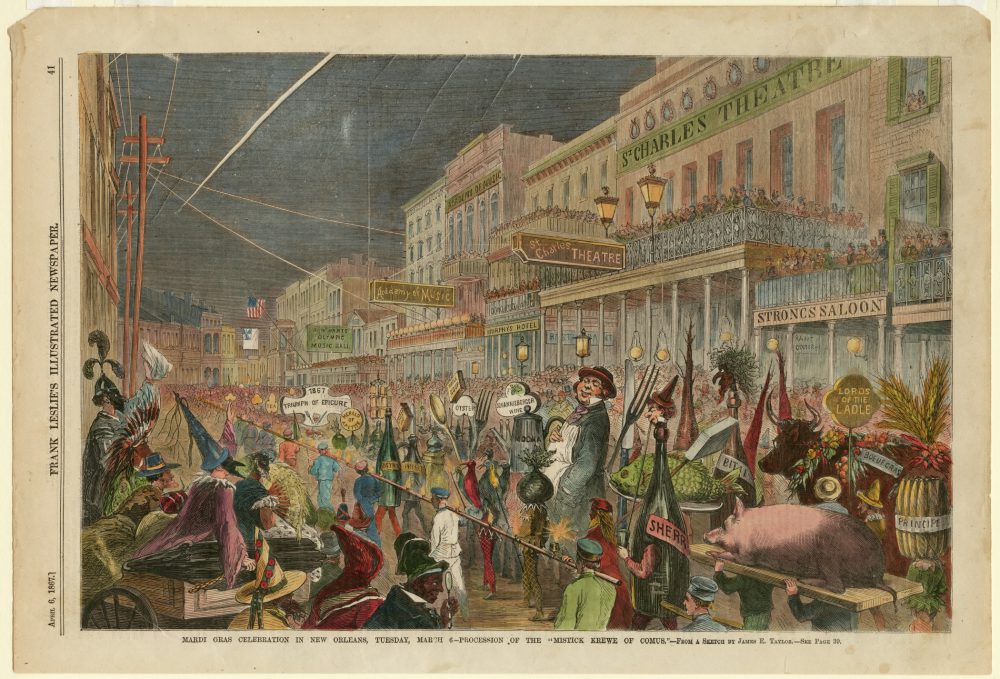Exhibition Pick: “An Architect and His City: Henry Howard’s New Orleans, 1837-1884”
An exhibition at the Historic New Orleans Collection documents the changing city over the course of an architect’s prolific career.

James Earl Taylor, Mardi Gras Celebration in New Orleans…, April 6, 1867. Wood engraving with watercolor from Frank Leslie’s Illustrated Newspaper. Courtesy the Historic New Orleans Collection.
“An Architect and His City: Henry Howard’s New Orleans, 1837-1884”
The Historic New Orleans Collection
533 Royal Street
November 18, 2015 - April 3, 2016
When the Irish-born architect Henry Howard began his practice in 1844, New Orleans was the third largest city in the country, trumped only by New York and Baltimore. The city, continuing to grow, was incorporating the nearby municipalities that surrounded the old bounds of the French Quarter. The people who were moving rapidly into New Orleans after the Louisiana Purchase needed houses, churches, and public works, and Howard was there to build them. During the Civil War, Howard left for Georgia, where he worked at the Confederate Naval Iron Works, and afterward, when he returned, he found a city in disarray but still desperate to expand. During his career, Howard designed over 240 structures in varying styles, including the Pontalba Buildings and the First Presbyterian Church on Lafayette Square.
“An Architect and His City” at the Historic New Orleans Collection is tied together by a series of recent photographs by Robert S. Brantley capturing Howard’s legacy today, of houses you’ve probably ridden past without even stopping. Relatively little other information about Howard is provided though, and it’s difficult to glean anything substantial about his practice from this exhibition. His life and career are instead excuses to unearth bizarre and fascinating artifacts of New Orleans in flux: newspaper illustrations of yellow-fever victims writhing in the arms of St. Vincent’s nuns; an 1867 depiction of an epicurean-themed Mardi Gras parade; sweeping vistas photographed from the top of St. Patrick’s Church; suggested paint colors from an 1868 guide to architecture.
One can’t help but get lost looking at the maps and views of the changing city—pinpointing where our current houses would have been (or, in fact, were), looking in wonder at former place names and the familiar wayward grid of streets nestled along the Mississippi.



